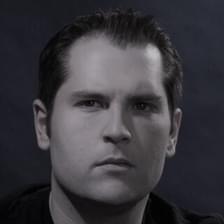Delayed Semi-Bluffing
There was a phrase created from one of the online tracking databases a few years ago called the “Fuzz Rule”. The Fuzz Ru...
Posted Oct 28, 2012
Contributor

Bart Hanson
Owner and Lead Pro
Professional Cash game trainer Bart Hanson has been producing strategy content for over fifteen years. He first started on Live at the Bike! back in 2005, then moved on to host "Cash Plays" on Poker Road, then "Deuce Plays" on Deuces Cracked and then to CrushLivePoker in 2012.
In his career as a professional poker player, Bart Hanson has:
-6 WSOP Final Tables
-Over 15 years of experience at the table
-Over $1,000,000 in tournament earnings
-Multiple appearances on ESPN and Poker Night in America
-4th place finish in 2019 WSOP Monster Stack
There was a phrase created from one of the online tracking databases a few years ago called the “Fuzz Rule”. The Fuzz Rule stated that whenever you were raised you needed a fairly strong hand to continue on. This applied to small stakes no limit cash games online. The creators of this rule had millions of hands from their databases as evidence. Normally, a “fairly strong hand” referred to better than one pair and the rule only applied to single raised pots.
I think that we can take this rule and directly correlate it to small to mid stakes live poker, with one exception. Usually when someone raises the turn or the river they have better than a one pair hand but not always on the flop. You see, even back when Americans could easily play online poker fundamentally the play was tougher and more sound. People realized that the best way to win big pots was to build big pots and slowplaying was not as common. This meant that even on the flop a hand like K♥ K♦ on a board of 5♠ 7♠ 9♣ if raised was rarely good. The difference, however, in live play, is that people still have a tendency to “trap” with their big hands. Facing a raise on the flop one pair hands still may be good as lower level live players have a tendency to overplay certain hands. However, in these same games, if you are facing a raise on the turn or on river one pair is rarely good.
So how can we use this information to our advantage when evaluating how to play draws? It still baffles me how many players misconstrue the concept of semi-bluffing. It is simple; making a play with a draw is basically a bluff. The number one reason to do so is to get your opponent to fold---or achieve what we call fold equity. Sometimes you get into a situation where you know your opponent will absolutely never fold to your raise—so why bluff then? You always want to put yourself in a spot where you have fold equity when making a play at the pot. If our opponents and we know then that most of the time one pair hands are no good on the turn after facing a raise where is our best spot to bluff?
Now, of course many of our opponents do not think like us and may not be paying attention to anything in the game. However, I still feel like these weak players subconsciously pick up on certain things especially if they have played for some time. Even the worst players will figure out that top pair or even sometimes an overpair is often no good when they get raised on the turn and they may fold a hand that they would never fold on the flop.
Let us take a look at an example. Say in a $5-$5 game with $800 effective stacks a player under the gun raises to $25, one person calls and we call with 5♠ 6♠ on the button. The flop comes out K♠ 3♣ 2♠ giving us a flush draw and a gutshot straight draw. The under the gun player bets out $70, the player in the middle folds and we call. The turn is the 6♥. Our opponent now leads into us for $175 and we raise to $500. The under the gun player hems and haws, says “you have 45 huh?” and finally folds A♦ K♦ face up.
Even though the stacks are deep, against typical opponents at the lower stakes, it is rare that you are going to get them to fold AK on the flop. If you continue to fire the turn and even the river if the draws brick out players will get themselves emotionally involved in the pot, always think that you have a missed draw and will call. This is of course why we should play sets fast. But by taking this alternative line of waiting for the turn to raise we actually add maximum fold equity. Not only does this player remember from the past that one pair is rarely good when he gets raised on the turn but we can use cards that complete other draws (like 45) to make our hand look even stronger. There is a detailed discussion of this concept in my podcast Deuce Plays Premium titled called “Delayed Semi-Bluffing.”